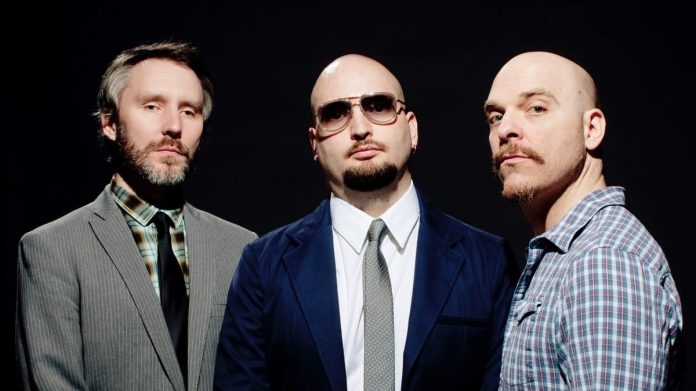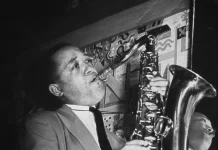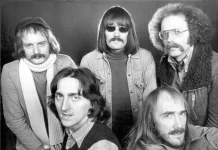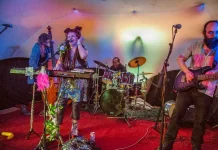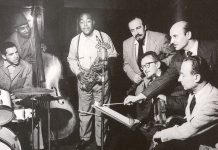Never under-estimate a codger’s willingness to embrace new technology. Spotify is not a skin complaint, nor is streaming the result of an urinary tract obliged to function beyond its biblical span. Downloading may soon be passé. None of us, including the superannuated, will be shocked by the announcement that post-Coltrane jazz is to appear on futuristic sound-carriers simply by our thinking about it.
In the Mesozoic era I was assisting the music critic Kenneth Loveland. His flat was weighted down by the largest number of LPs I’d seen in one place outside a record shop. The floor joists suffered in silence. CDs were on the way: in fact, our trickle of review copies – he and I wrote on “classical” music for a daily newspaper – arrived before we had the means of playing them. (I’ve forgotten how that worked, but the blats operate in masonic ways.)
The interregnum between the disappearance of LPs and their supplanting by CDs appears on reflection to have been so brief as to have been missed because we blinked. Maybe it was a case of instantaneous obsolescence, the difference in size guaranteeing a swift transition, though a further reduction in diameter of a CD from 12cm to something even smaller was an unexplained compacting too far.
The so-called return of vinyl, a backwash more than a fresh tidal wave, is discworld in its lingering death throes. Does it also say something about the state of jazz, in the sense that the growth of the music for decades ran parallel with the refinement of a thin plastic plate and now embraces impalpably digital media conveying sounds masquerading as jazz?
At a recent virtual jazz festival – pre-recorded gigs made available for video streaming – I was talking to John Hellings, the BBC radio jazz presenter. We were discussing the history of jazz in terms of its decade-by-decade changes. We having reached the 1980s, I observed that there were meaningful labels for what had happened up till then, such as New Orleans, Chicago, New York, swing, bebop, cool, etc., but none for the 1980s, 1990s (except maybe “The 1980s” and “The 1990s”) and certainly nothing for the first decade of the new millennium. I suggested that fusion was rock’s gain and jazz’s loss and that since then it had been eclecticism for most of the time. Everyone knows that even when fusion was under way, the term “jazz” was dropped by cynical record companies who considered it the embrace of asphyxiation if not the kiss of death. They were probably less concerned with the fate of improvisation and other jazz staples than with what jazz meant to a record-buying public long marinaded in pop music and its pretentious derivatives.
In that discussion, I’d failed to measure how much one jazz era was either mild antidote or violent reaction to what had gone before. I’d also forgotten to mention how Philip Larkin’s definition of jazz as “happy” had failed to consider the caveat of the merriment’s roots in a fair amount of compounded and updated misery. Bop could be seen as angry music, Free even angrier; happiness, one presumes, lay in the jettisoning of what had become repetitive and dull. Also, jazz, in the shape of swing, bebop and the rest, was not the only form of popular music around at the time, any more than “classical” music ever had been: Vienna for most music-lovers is more Johann Strauss than Beethoven.
Still, in 2020, we ought to be able to fix a moniker to jazz in the 1980s and distinguish it from what happened in the next 10 years, and the 10 years after that. Many of the changes – the illusory jazz renaissance foretold by an industry desperate to cash in on something enduringly hip, and the conveyor belt of graduates leaving jazz studies to play anaemic simulacra of hard bop – sent jazz back in on itself. And where it can discover nothing but the past, musicians will look at what’s going on around them. For too many of us, “modern” jazz is now 80 years old; it should never be more than 10, and we should be listening to The Bad Plus if only out of duty.
It’s not that jazz has been asleep or mortally wounded for 30 years, or that any reawakening was signalled by the appearance of Wynton Marsalis as some kind of saviour. Marsalis is a squeaky-brilliant trumpeter and the kind of publicist jazz has always needed since the 1960s. But at the Lincoln Center he’s been consolidating jazz history and pursuing classic repertory – ever a cardinal exercise – and leaving others to create anew. He’s too nice and essential a flag-waver for anyone to be full-front nasty towards him, which is why George E. Lewis in his 2009 history of the Association for the Advancement of Creative Musicians Inc. opined: “The transcribed orature of musicians endorsing the importance of exploration, discovery, and experiment is quite vast and easy to access; it spans virtually every era of jazz music and includes nearly every improviser of canonical stature before the rise of Wynton Marsalis in the mid-1980s.” Droll, or what?
So much has been, and still is, happening. Will there be change too in the way we listen to jazz and the kind of jazz that new recording techniques will enable? The proverbial jury is not only out but divided along lines lodged in the belief that the internet might be a force for bad. So, we cling to certainties. Certain it is that jazz is no longer exclusively African American but that a white musician who plays it without recognising its black provenance has shuffled down a byway. What’s going on around the black population in America at the moment is police brutality and the rise and veiled presidential endorsement of white supremacy. Some things about jazz, even extra-musical ones, never change, including the price of CDs. This last a codger’s plaint.

